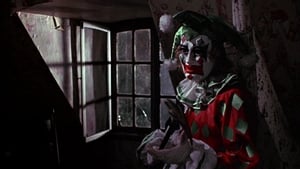Cast
View AllKate McNeil
as Katherine
Eileen Davidson
as Vicki
Janis Ward
as Liz
Robin Meloy
as Jeanie
Harley Jane Kozak
as Diane
Jodi Draigie
as Morgan
Ellen Dorsher
as Stevie
Lois Kelso Hunt
as Mrs. Slater
Christopher Lawrence
as Dr. Beck
Michael Kuhn
as Peter
Michael Sergio
as Rick
Ruth Walsh
as Mother
Ed Heath
as Policeman
Jean Schertler
as Nurse
Larry Singer
as Photographer
Crew
Director
- Mark Rosman
Writer
- Mark Rosman
Producer
- Mark Rosman
- John G. Clark
Reviews
Wuchak
Decent early 80s’ slasher with some script flaws
RELEASED IN 1983 and written & directed by Mark Rosman Stoller, "The House on Sorority Row" chronicles events at a sorority house outside of Baltimore where seven girls responsible for an accidental death start dying one by one during their graduation party.
The film borrows elements from “Black Christmas” (1974) and the French horror “Diabolique” (1955), like the unused swimming pool to conceal a body that later disappears. The first act is quite good, particularly the accidental death scene, which is well-acted for no-name actresses. Only two of the seven went on to a career in acting: The protagonist who plays Katie (Kate McNeil) and the slutty girl, Vicky (Eileen Davidson). Speaking of the girls, they present a realistic feminine smorgasbord with Morgan (Jodi Draigie) arguably being the most attractive. None of them, however, are anything to go gaga over (looks-wise, that is).
What marred the film for me was the dubious writing. For instance, wouldn't the girls be perplexed at how a dead body mysteriously made it to the attic? What caused it to suddenly fall down the trap door? Why don’t any of the girls look at the face of the corpse to verify its identity? Would a couple of girls who know very little about guns seriously enact a prank using a questionable mixture of bullets and blanks? If you can get past these issues, “The House on Sorority Row” is a decent early 80s’ slasher with a worthy plot and pretty good production values.
THE MOVIE RUNS 1 hour 31 minutes and was shot at Eltonhead Mansion in Pikesville, Maryland, with establishing shots done at University of Maryland, College Park. ADDITIONAL WRITER: Bobby Fine.
GRADE: C
Mar 29, 2018
JPV852
Has its moments I guess but nothing that really stands out other than a couple creepy shots. The performances are basic for this genre (though Akthryn McNeil was fine in the lead) while the kills are forgettable (just girls getting killed over and over using a cane). The twist also wasn't all that surprising either. Eh, it's fine however doubtful I'd ever revisit. **3.0/5**
Aug 19, 2021
Thematic Analysis
This Horror/Mystery/Thriller film explores themes of fear and survival, delving into the psychological aspects of human nature when confronted with the unknown. The House on Sorority Row presents a unique perspective on the horror genre by focusing on the psychological terror rather than relying on typical jump scares.
Director Mark Rosman brings their distinctive visual style to this film, continuing their exploration of themes seen in their previous works while adding new elements. Their approach to pacing and visual storytelling creates a viewing experience that rewards close attention.
Released in 1982, the film exists within a cultural context that now offers viewers historical perspective on the social issues of that era. Its reception demonstrates the diverse reactions to its artistic choices and its place in cinema history.
Did You Know?
- The production of The House on Sorority Row took approximately 27 months from pre-production to final cut.
- With a budget of $0.4 million, the film proved to be a financial success, earning back its investment and more.
- The final cut of the film runs for 91 minutes, though the director's initial assembly was reportedly 138 minutes long.
- The director insisted on using practical effects whenever possible, reserving CGI for only the most necessary scenes.
- The film contains approximately 2086 individual shots.
- The screenplay went through 10 major revisions before the final shooting script was approved.
Historical Context
- In 1982, when this film was released:
- Economic policies were shifting toward deregulation in many Western countries.
- Personal computers were beginning to transform homes and workplaces.
- Independent cinema was growing in influence, challenging the dominance of major studios.
How This Film Stands Out
While The House on Sorority Row shares thematic elements with other films in its genre, it distinguishes itself through its unique approach to storytelling, visual style, and character development.
Unlike Street Mobster, which focuses more on action than character development, The House on Sorority Row subverts genre expectations by exploring its themes with greater nuance.
While films like King of the Ants and Shadow of a Doubt explore similar territory, The House on Sorority Row stands apart through its deeper exploration of its central themes and more complex characterization.
This film's unique contribution to cinema lies in its bold artistic choices and willingness to challenge viewer expectations, making it a valuable addition to its genre.
Details
- Release Date: November 19, 1982
- Runtime: 1h 31m
- Budget: $425,000
- Revenue: $10,604,986
Where to Watch













